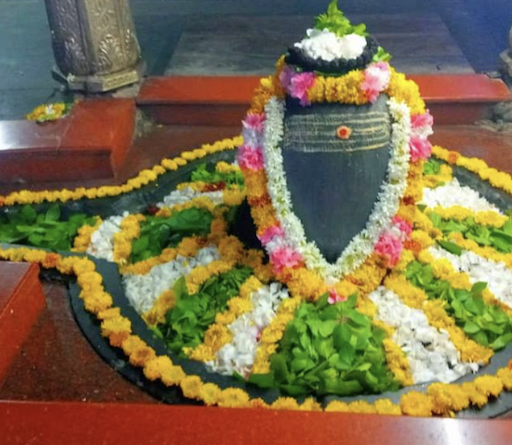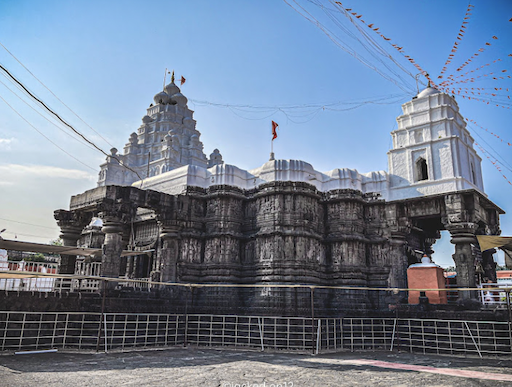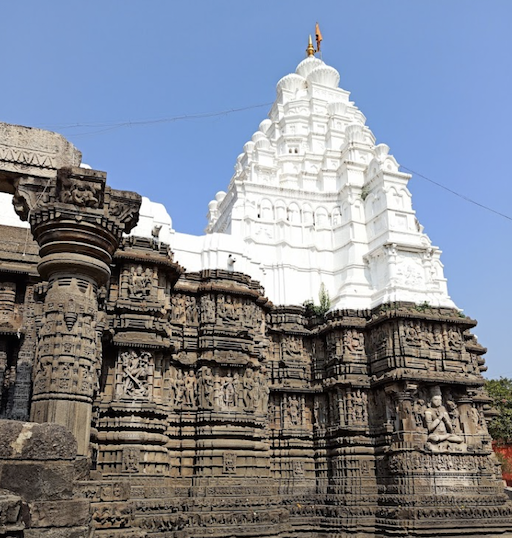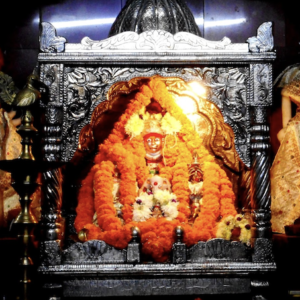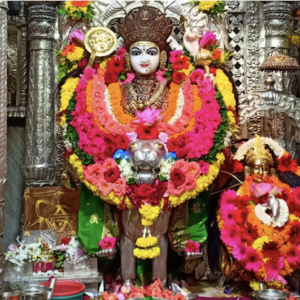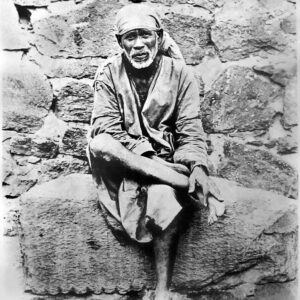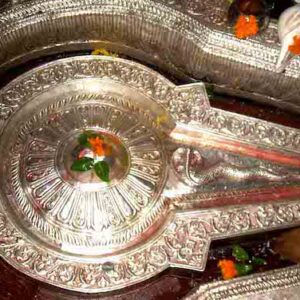This is one of the Jyotirlinga.
You can make offerings and go in close proximity of the linga. There is a place to sit and meditate. You can go into meditative states here effortlessly.
How to Get There:
The temple is 59.5 kms North West of Nanded.
Map:
https://maps.app.goo.gl/7yiDHBwi3b17aoyt5
About Nageshwar Jyotirlinga
Aundha Nagnath (Nageshwaram) is a Temple in Hingoli District in the state of Maharashtra, India.
This is an important place of pilgrimage in Mahabharata.The present temple is said to have been built by the Seuna (Yadava) dynasty and dates to 13th century. The first temple is said to be from time of the Mahabharata and is believed to have been constructed by Yudhishthira, eldest of the Pandavas, when they were expelled for 14 years from Hastinapur. It has been stated that the temple building was seven-storeyed before it was sacked by Aurangzeb.
Nageshwar Jyotirlinga History
The courtyard of Shivtirtha, spread over 60,000 square feet, is protected by a 6 meter high rampart. In which there are four entrances. Spread over an area of about 7200 square feet in the middle of the grand complex, this pagoda situated on a platform of 75 feet wide, 150 feet long and 8 feet high black stone blocks, has an urn on the 60 feet upper part of this pagoda. The Shikhar with white aura is 31 feet in height in the selection of lime. This restoration work is the gift of Punyashloka Maharani Ahilya Bai Holkar. Seeing the architecture of this pagoda without foundation stone, it seems as if the Shilpacharyas have poured their whole life’s meditation into these idols. The 60 plaques from the surface to the top are innovative examples of sculpture, in the upper rows (which are known as Thar in Shilpa Shastra) there is a unique sculpture of Gajmalika, horse team, military force and war events. Vishnu is seated on the north-facing wall of the pagoda, Brahma on the east-facing wall and Rudra with Parvati on the south-facing wall. The ‘Srishti Vivartak’ Tandav dance of Nagvibhushit Shiva idol, Ravana Dashanan in Garvaharan idol, Sarvaprakashak Shiva and Trilokya Janani Parvati’s Anand Sindhu depicting sweetness and wonderful execution of Shiva-family’s terracotta idols are seen setting the paradigm of excellence. Sculptures of Heaven-Death and Hades depicting the culmination of architecture, Mahabharata and Ramayana period references in stone, Yati, Yaksha, Yakshini’s Narvashikhant beauty, Bajratika, Kangan, Ring, Mautikamala, lifting of limbs full of elegance and elegance Crafts adorn the outer walls of the temple. Pandit Darshan Nagnathrao Pathak, Upadhyay of Shri Nageshwar Jyotirlinga, tells that Vishwakarma himself created the eternal abode of Nageshwar Jyotirlinga. The black stone used in the construction of the pagoda was brought from a distance of sixteen kos and 89000 crores of gold coins were spent on the ‘black oil’ used to maintain the speed of the wooden wheels of the vehicles that brought it. According to Mr. Pathak, from the beginning of the 14th century to the 14th century, Satavahanas, North Chalukyas, Eastern Chalukyas, Rashtrakutas, Kadambas, Vakatakas, Silaharas and Yadava royal houses provided financial assistance for the arrangement of Shivalaya in this area. A stone plaque has also been found regarding the grant of assistance for lamp-wicks by the Vakataka kings of Vashi. From the Mayur Khandi copperplate obtained from the excavation in Kondilyapur, there is evidence of Naresh III Govind coming to Aundha village to visit Shri Nageshwar Jyotirlinga, as well as the presence of a temple of Kanakeshwari Devi in the south is also confirmed. Even the Satavahana kings, who ruled for 460 years, are mentioned in the Arvyayikas to have darshan at Shri Nageshwar Jyotirlinga. Ornate temple sculpture built in Hemadpanti style Like the ornate temples of Maharashtra’s Yadava period, this temple is also built in Hemadpanti style. Ancient history, culture and archeology expert Dr. According to Shivakant Vajpayee, structurally this pagoda is built in Hemadpant style. The temple is built in Panchayatan style with black stone and ‘interlocking’ features. That is, basically the ancient temples of Gods and Goddesses are located at the four corners of the temple.
8th Jyotirlinga Nagesh Daruka Vane
Shri Nageshwar Jyotirlinga is situated at the eighth position among the 12 Jyotirlingas. The legend here is that the Pandavas came here in exile, they had a cow named Kapila, here she used to go inside the vast lake and return every day leaving milk. On day 1, Gurakhi saw that why Gaya was going into the water, he told all that information to Dharmaraj Yudhishthir. Later Bhima told all the information to Dharmaraj Yudhishthira. Dharmaraj Yudhishthir ji said that with the blow of your donkey, break the pond at three places and remove all the water. From the bottom of the pond, like the light of the sun, light came from below. What is the meaning of Jyotirlinga, where God himself is sitting in the form of light. The people who were living here could not understand day and night. It was heard in the sky that by bringing 21 sand from Rameshwaram and Shaligram from Gandaki river in Nepal, establish a linga. Dharmaraj Yudhishthir ji established Jyotirlinga We will build this golden temple with a resolution. Lord Krishna told that in the future, if people will not keep stones in Kalyug, then no one will keep your golden temple, that is why the huge Shri Nageshwar Jyotirlinga temple was made of stone. This. In 1212, the main gate of Shri Nageshwar Jyotirlinga temple is going to move from east to west due to the kirtan devotion of Sant Namdev Maharaj ji. Aurangzeb has broken the upper part of Shri Nageshwar Jyotirlinga temple. Indore’s queen Rajmata Ahilyabai Holkar has renovated the Shri Nageshwar Jyotirlinga temple. There is only one way to go to the sanctum sanctorum to see Shri Nageshwar Jyotirlinga. Shri Nageshwar Jyotirlinga is here Shiva and Vishnu ji Harihar Atmak Jyotirlinga Swaroop Earlier the snake god used to worship the linga in the pond, hence the god named himself Nageshwar. Killed a demon named Daru, that’s why Daru’s forest Of the 12 Jyotirlingas, there are only two Jyotirlingas of sand, one in Rameshwaram, two numbers in Nageshwar Jyotirlinga.
